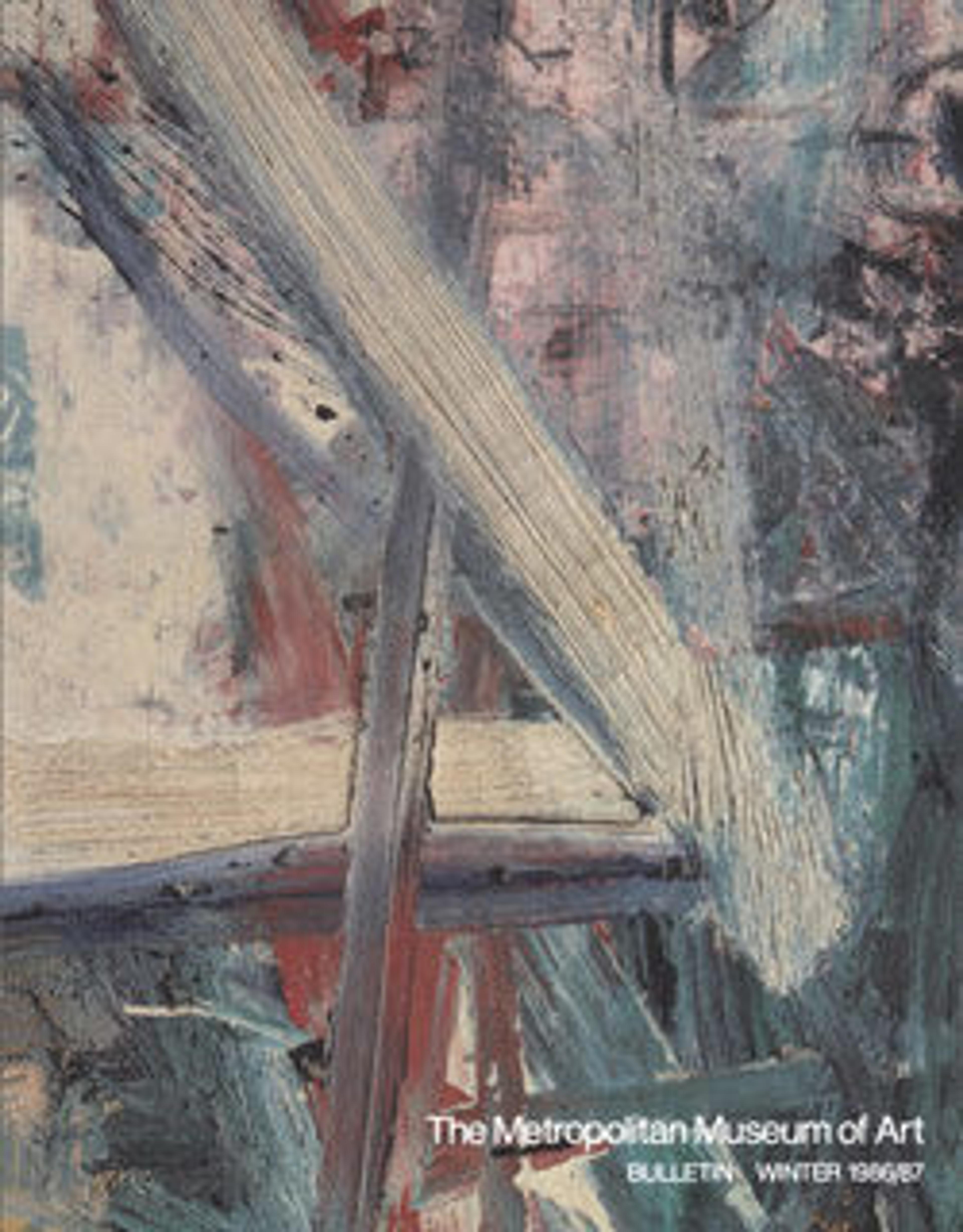The Glazier
In his fascination with landscape and figurative subjects, Willem de Kooning always veered away from mainstream Abstract Expressionism, a movement in which he was nevertheless a leader. The Glazier belongs to a series of paintings of men created in the late 1930s and early 1940s. The artist said that his palette of somber earth tones was inspired by the Boscoreale frescoes that he had often come to see at The Met.
Artwork Details
- Title: The Glazier
- Artist: Willem de Kooning (American (born The Netherlands), Rotterdam 1904–1997 East Hampton, New York)
- Date: 1940
- Medium: Oil on canvas
- Dimensions: 54 1/8 × 44 1/8 in. (137.5 × 112.1 cm)
- Classification: Paintings
- Credit Line: From the Collection of Thomas B. Hess, Gift of the heirs of Thomas B. Hess, 1984
- Object Number: 1984.613.1
- Rights and Reproduction: © 2025 Artists Rights Society (ARS), New York
- Curatorial Department: Modern and Contemporary Art
More Artwork
Research Resources
The Met provides unparalleled resources for research and welcomes an international community of students and scholars. The Met's Open Access API is where creators and researchers can connect to the The Met collection. Open Access data and public domain images are available for unrestricted commercial and noncommercial use without permission or fee.
To request images under copyright and other restrictions, please use this Image Request form.
Feedback
We continue to research and examine historical and cultural context for objects in The Met collection. If you have comments or questions about this object record, please contact us using the form below. The Museum looks forward to receiving your comments.
